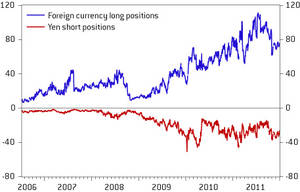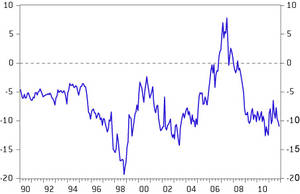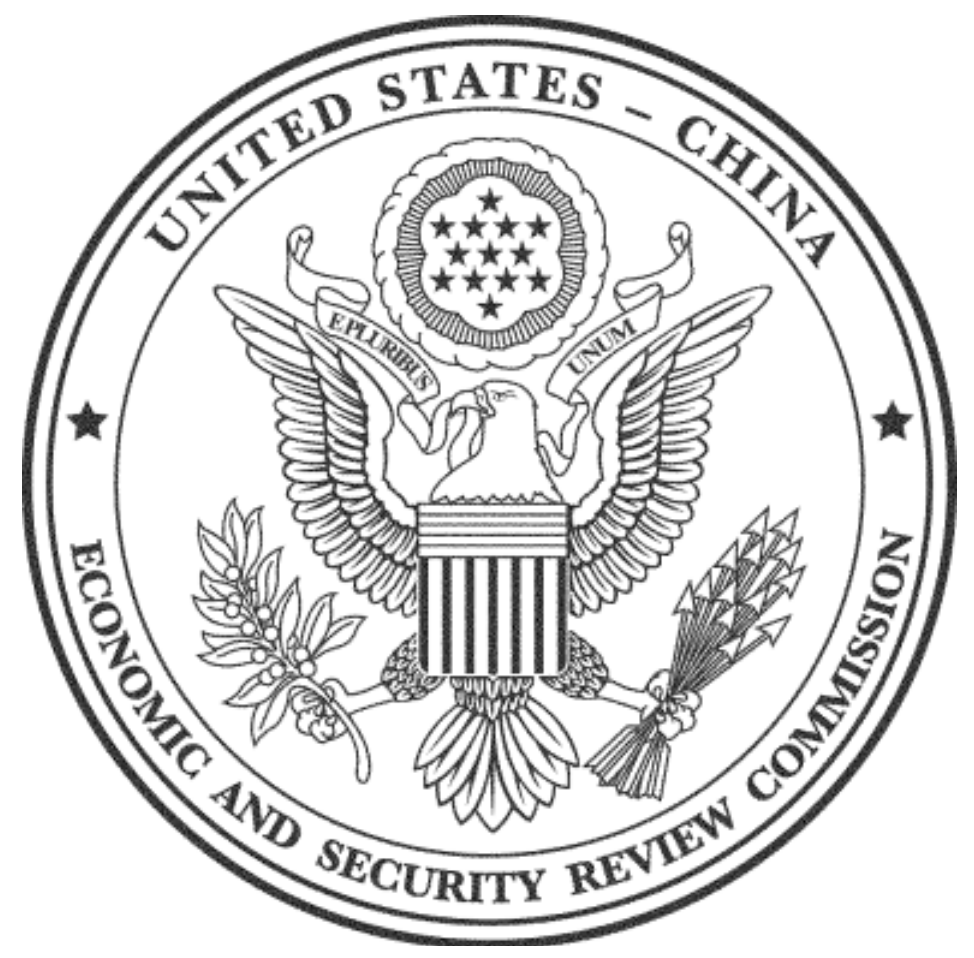Blog Post
Prospects for the yen carry trade
Certain carry trade strategies could contribute to financial market volatility and should thus be monitored by institutions responsible for financial stability. The volume of open carry trade positions also carries information about the risk appetite of investors. This contribution assesses the prospects for the Japanese yen carry trade on currency markets. ‘Carry trade’ refers to […]
Certain carry trade strategies could contribute to financial market volatility and should thus be monitored by institutions responsible for financial stability. The volume of open carry trade positions also carries information about the risk appetite of investors. This contribution assesses the prospects for the Japanese yen carry trade on currency markets.
‘Carry trade’ refers to a risky financial position in which an investor borrows in a low-yield instrument and invests in a high-yield instrument, or engages in a transaction similar to this. A bank borrowing from a central bank and lending these funds to its customers at a higher interest rate, or purchasing higher-yielding securities, is also a kind of carry trade. If customers repay and the securities do not default, banks make a profit.
Figure 1: Three-month interbank interest rates (%), Jan 1986 – Dec 2011
Sources: Datastream and Reserve Bank of New Zealand. But carry trade is most frequently mentioned in the context of currency markets: currencies with the higher interest rate are purchased against currencies with the lower interest rate. Since the mid-1990s Japanese interbank interest rates are close to zero, suggesting that the Japanese yen could be a candidate for funding carry trade positions (Figure 1).
But carry trade is most frequently mentioned in the context of currency markets: currencies with the higher interest rate are purchased against currencies with the lower interest rate. Since the mid-1990s Japanese interbank interest rates are close to zero, suggesting that the Japanese yen could be a candidate for funding carry trade positions (Figure 1).
There are various ways to conduct carry trade. A simple way is to sell a low-yield currency (eg yen) and buy a high-yield currency (eg New Zealand dollar). But one need not possess a low-yield currency: borrowing in a low-yield currency, exchanging it for a high yield one and purchasing a government bond of this high-yield currency creates a leveraged carry trade exposure, whereby the investor is exposed to the return/risk of the full amount of the loan. Foreign currency margin trade could also be used: the investor needs to open a margin account and put a certain amount of money there. Then the financial services provider does the borrowing/lending operations behind it, and the investor can open a foreign currency position amounting to several factors of his/her deposit, thereby increasing both risk and expected return. There are various other derivative positions for setting-up carry trade positions.
The incentive to open carry trade positions also depends on the traders’ appetite for risk. If other conditions are the same, the volume of carry trade expands with a high-risk appetite and reduces with a low-risk appetite. We found some evidence for this relationship when looking at some measures of carry trade volume and the VIX index (the implied volatility index of S&P 500 index options).
Figure 2: Yen exchange rates, Jan 1990 – Dec 2011
Source: Bank of Japan and Reserve Bank of Australia.
Note: A lower value indicates a stronger yen. The exchange rate between the funding currency (eg yen) and the investment currency (eg New Zealand dollar) affects the rate of return on carry trades. Expectations about future changes to the exchange rate impact the decision to enter a carry trade strategy. When devaluation of the yen is expected, the expected rate of return for the yen carry trade rises and motivates investors to invest.
The exchange rate between the funding currency (eg yen) and the investment currency (eg New Zealand dollar) affects the rate of return on carry trades. Expectations about future changes to the exchange rate impact the decision to enter a carry trade strategy. When devaluation of the yen is expected, the expected rate of return for the yen carry trade rises and motivates investors to invest.
On the other hand, a high volume of carry trade activities can also impact the exchange rate, especially in markets in which currency turnover is not that large. For example, interest rates were very high in Iceland, attracting a large inflow of carry trade investment before the crisis, ie euros and dollars were exchanged for Icelandic kronas leading to the appreciation of the Icelandic krona’s exchange rate. When carry trade investors tried to pull out their earlier investment during the course of the financial crisis, the korna depreciated massively.
Before the crisis, the yen depreciated significantly against the Australian and New Zealand dollars (Figure 2), thereby making the yen carry trade highly profitable. But after the collapse of Lehman Brothers the yen appreciated sharply against the Australian and New Zealand currencies – by about 40 percent –, leading to severe losses for carry trade investors (Figure 3). Recently, there was no visible trend, but exchange rates were volatile).
Figure 3: Cumulative returs to 100 initial non-leveraged carry trade in yen against five currencies, Jan 2000 – Dec 2011
Source: Updated from Darvas, Zsolt (2009) ‘Leveraged vary trade portfolios’, Journal of Banking and Finance, 33(5), 944-957.
Note: Transactions costs are considered, but not the interest income of collateral.

How did yen carry trade positions evolve? There are various markets in which carry trade positions can be taken and certainly not all foreign currency transactions are motivated by carry trade. Open positions on the Tokyo International Financial Futures Exchange are indicated in Figure 4. Before the crisis, there was a clear trend of increasing long positions in foreign currencies, while short yen positions have also increased somewhat – consistent with carry trade. At the time of the collapse of Lehman Brothers there was a significant decline in open positions because of the sharp appreciation of the yen and the consequent losses on carry trade positions, which induced investors to close these positions. Figure 3 shows the return on non-leveraged positions, but losses on leveraged positions were of course much higher. The heightened risk aversion that emerged, and investor losses on other financial products, have also reduced their capacity to engage in derivatives positions. However, already from mid-2009, the open positions increased dramatically, reaching a peak in summer 2011. Since then, open positions have declined somewhat.
Figure 4: Foreign-exchange margin trade at the Tokyo international Financial Futures Exchange ($100 millions), 10 July 2006 – 31 Dec 2011
Source: Tokyo International Financial Futures Exchange. Note: Yen short positions (ie investors ‘selling’ the yen) are the aggregate of short positions against seven major currencies: US dollar, Euro, Australian dollar, New Zealand dollar, Canadian dollar, British pound and Swiss franc. Foreign currency long positions (ie investors ‘buying’ foreign currencies) are the aggregate of long positions against the yen for the same seven currencies.
 Trade through an interoffice account between the branch of a foreign bank in Japan and its head office abroad is another way of conducting yen carry trade. The Japanese branch of a foreign bank lends funds to its head office by funding the yen in the Japanese interbank market, and the head office invests those funds in high-profit assets. When the volume of the yen carry trade expands, the net borrowing position (interoffice borrowing > interoffice lending) declines, or converts into a net lending position (interoffice borrowing < interoffice lending).
Trade through an interoffice account between the branch of a foreign bank in Japan and its head office abroad is another way of conducting yen carry trade. The Japanese branch of a foreign bank lends funds to its head office by funding the yen in the Japanese interbank market, and the head office invests those funds in high-profit assets. When the volume of the yen carry trade expands, the net borrowing position (interoffice borrowing > interoffice lending) declines, or converts into a net lending position (interoffice borrowing < interoffice lending).
In the 1990s and early 2000s, the interoffice borrowing of these branches exceeded their lending (Figure 5). But from about 2004 to 2007 the net borrowing position turned to net lending, possibly implying the presence of carry trade. After June 2007, and the outbreak of the US mortgage crisis, net lending declined to a level of close to zero up to late summer 2008. After the collapse of Lehman Brothers it declined further to minus ¥10 trillion (close to the historical average) and did not recover since then. This suggests that carry trade through interoffice lending of banks’ branches in Japan has not yet returned.
Figure 5: Interoffice account net position of foreign banks’ branches, January 1990 – November 2011 (¥ trillion)
Source: Bank of Japan.
Note: Net position = lending minus borrowing.

To sum up, the open positions of margin trades at the Tokyo exchange are almost at a historical high, though has declined during the past half year, and interoffice lending of foreign banks’ branches are at the historical average. Risk appetite may fall due to the downgrade in the US credit rating, the fiscal crisis in Europe and the possibility of a double-dip recession. This may give rise to further unwinding of yen carry trade positions and an increase in market volatility.
Republishing and referencing
Bruegel considers itself a public good and takes no institutional standpoint. Anyone is free to republish and/or quote this post without prior consent. Please provide a full reference, clearly stating Bruegel and the relevant author as the source, and include a prominent hyperlink to the original post.









